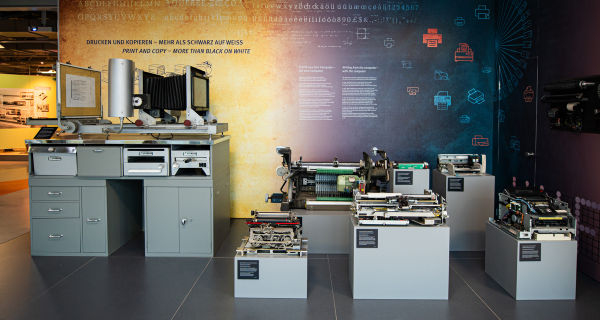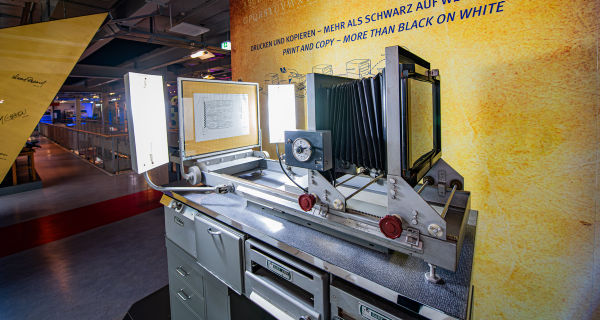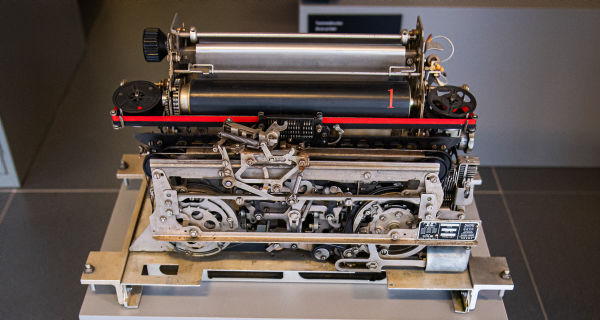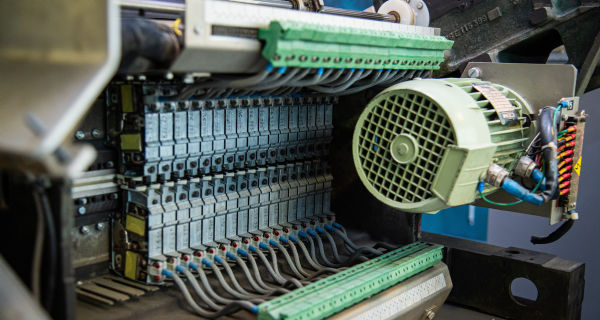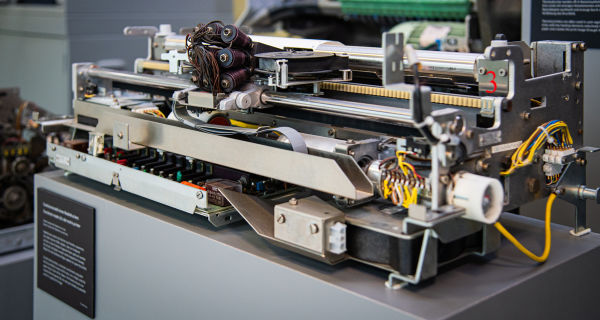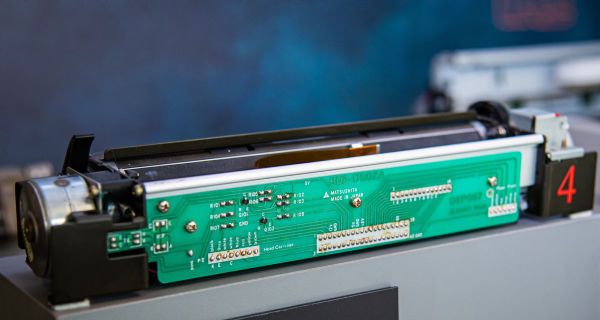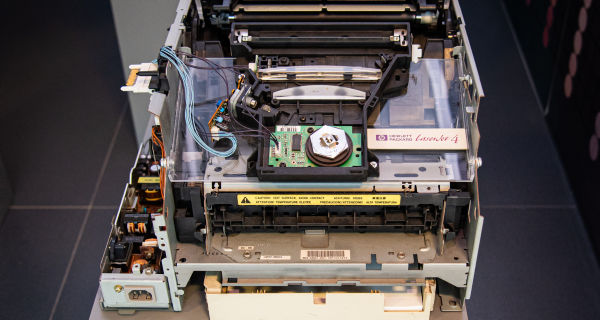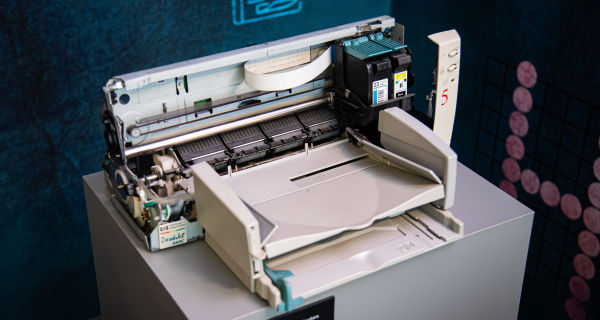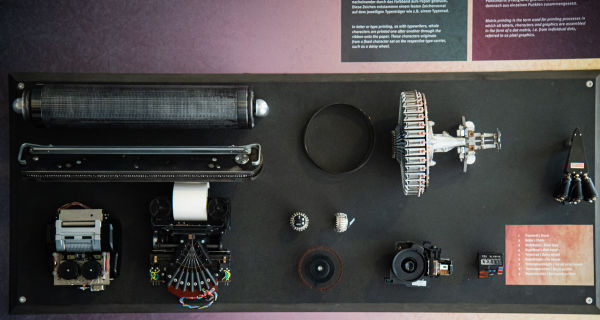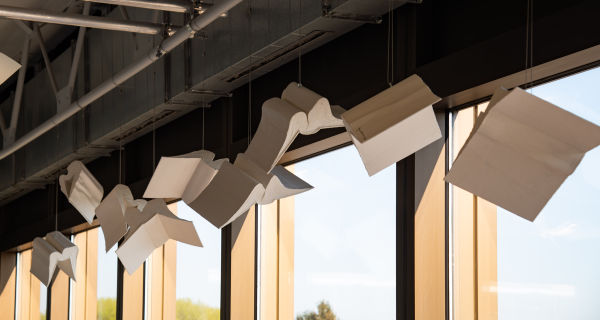Printing and copying – more than black on white
Since the beginning of 2024, a new exhibition area has been on display at the start of the tour on the second floor. It covers the history of printers and copiers, which first found their way into companies and offices in the 1950s and then also into private households a good 30 years ago. The eye-catcher and centrepiece is a Xerox 1385, the forefather of all laser printers and copiers. It made it possible from 1952 to produce printing plates and copies for offset printing. Although individual copies were also possible, the process was still very complicated.
Also on display is a Honeywell Bull drum printer from 1975. The different types of printers clearly show how a highly complex technology, previously only mastered by experts, has become a simple everyday routine. Typesetting is no longer done with lead type. Instead, entire book or newspaper pages are now created on the computer.
But there is also something to hear: the working noises of the different printer types can be heard at the touch of a button.
The presentation is complemented by the artistic contribution "Flying Books" by Dorothea Reese-Heim.
The history of computer printers
Early computers used electric typewriters and teleprinters to print their results until the first type printers came along. In 1953, the company Remington Rand produced drum printers which are considered to be the first high-speed printers. Starting in 1960, they were joined by chain printers and steel-tape printers. The daisy wheel printer was invented in 1969. It used replaceable daisy wheels and produced letter-quality print-outs that were comparable to those made by typewriting.
Graphics with dot matrix printers
1970 saw the beginning of the age of matrix printers, which use small individual dots to form letters. That year, Digital Equipment Corporation (DEC) produced the dot matrix printer, a device that could also reproduce graphics and photos on paper.
In 1971, the engineer Gary Starkweather built the first laser printer at the Xerox Palo Alto Research Center. However, it did not reach market maturity until 1978 and the introduction of the Xerox 9700, a machine that could print 120 pages per minute.
Ink jet clogs the printer head
Direct thermal printers began to be used in fax machines and desktop computers in 1974, followed by thermal transfer printers, which produced high-quality black-white and colour print-outs.
The ink-jet printer followed in 1976. However, the process was not mature: The main problem faced by engineers was that dried ink repeatedly clogged the printer head.
Laser printers conquer offices
In the 1980s, laser printers and ink-jet printers took over offices. In 1984, Hewlett-Packard (HP) presented the first laser printer for IBM-compatible PCs, the HP LaserJet. It cost only $3,500. Up to that point, a high-quality laser printer had cost between $100,000 and $350,000.
In 1988, HP introduced the ink-jet printer DeskJet, which cost just $1,000: Engineers at HP and Canon had solved the problem of the clogged printer head.
